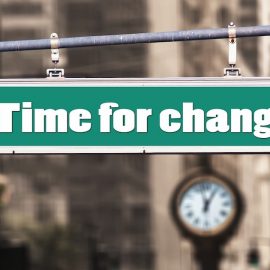

This article is an excerpt from the Shortform book guide to "Quiet: The Power of Introverts" by Susan Cain. Shortform has the world's best summaries and analyses of books you should be reading.
Like this article? Sign up for a free trial here .
Who is the Quiet author? How do her experiences shape her writing and what do those experiences tell us about introverts in society?
Quiet author Susan Cain struggled with the conflict between her introversion and the public speaking component of her job. He shares her experience and research to show how you can stretch beyond your temperament.
Read on for more about the Quiet author and what she shared.
Quiet Author on Changing Your Temperament
Further research by Dr. Carl Schwartz at Massachusetts General Hospital on Kagan’s subjects as teenagers showed that we can stretch beyond our inherited characteristics, but only to a point. Our temperaments continue to influence us throughout our lives.
Schwartz used an fMRI machine that measures brain activity. He showed participants a fast-moving series of photos of people’s faces to simulate the experience of walking into a crowded room. Some of the photos were repeated and became “familiar,” while new ones were continually added to the sequence. The people who had been highly reactive as children were more sensitive—they reacted more strongly—to the photos of unfamiliar faces.
Some of the high-reactives had grown into socially engaged and friendly teenagers who were not outwardly bothered by new experiences, but their brains still reacted more strongly to the unfamiliar faces.
Our personalities are somewhat like rubber bands, able to stretch but only so far. Introvert Bill Gates can hone his social skills but he’ll never be as gregarious as Bill Clinton—and Clinton will never be a solitary computer genius like Gates.
Stretching Yourself
When the emotional center of our brain—the amygdala—reacts with anxiety to a situation, another part of the brain, the prefrontal cortex, can send a counter-message to calm down.
Thus, we can teach ourselves to react differently, although we may revert to our old reactions under stress.
Both introverts and extroverts can stretch beyond their comfort zones when it’s to their advantage, particularly to further a career. For example, an introvert can learn and practice skills to be more comfortable interacting socially, while an extrovert can learn to slow down and be more reflective by cultivating friendships with introverts.
As an introvert, Quiet author Susan Cain struggled with public speaking, yet it was something her work often required her to do. To make the experience less stressful, she took a class in public speaking and also taught herself a number of stress-reduction techniques, such as:
- Treating every speech as a creative project and enjoying the research and preparation, which carries over into the presentation itself.
- Speaking on subjects she’s passionate about, which enables her to focus on the topic more than on the audience. Also, since she’s interested in the topic, she doesn’t have to project enthusiasm she doesn’t feel.
(Shortform note: View Cain’s 2012 TED talk on “The Power of Introverts” here.)

———End of Preview———
Like what you just read? Read the rest of the world's best book summary and analysis of Susan Cain's "Quiet: The Power of Introverts" at Shortform .
Here's what you'll find in our full Quiet: The Power of Introverts summary :
- How society overvalues extroverts
- Why introverts' overlooked strengths are the key to greater success in work, school, and society
- How extroversion caused the fall of Enron






